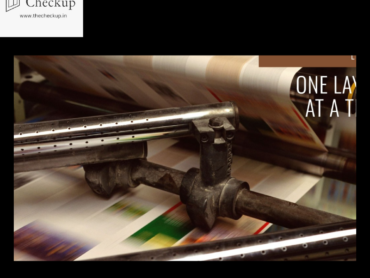The message “You deserve a seizure for your posts” appeared in capital letters combined with a blinding strobe light when American journalist Kurt Eichenwald opened an animated graphic sent to him on Twitter in 2017. Eichenwald, who suffers from epilepsy, had a seizure right away. The sender was charged with criminal cyberstalking with the intent to kill or cause bodily harm.
“The doctor gave me several warnings: Never tell anyone unless necessary, because I might be ostracized. Call it seizure disorder, not epilepsy, because fewer people would be frightened. Try to choose a profession as free from stress as possible.” said Kurt Eichenwald.
Epileptic patients have long been enveloped in secrecy and taboo shrouded, to the point where exposing their clinical status is a difficult knot to untangle. Despite not being a psychiatric condition, it has always had strong cultural and superstitious associations – with the seizure being attributed to ‘possession’ by otherworldly creatures or the Devil or being ‘diseased’. Fear is oftentimes worse than stigma, and whether acceptance comes before treatment is difficult to ascertain.

Credit: Al Margen Pagina (https://i0.wp.com/auxx.me/wp-content/uploads/2018/09/40-2.jpg?w=768&ssl=1)
The ‘diseased’ have always depended solely on drugs. Medicine keeps forgetting that the environment we thrive in plays a poignant role in the way we heal and grow. Our five senses work like a well-oiled machine to bring in the balance we need. Interestingly, researchers from the Czech Republic’s CEITEC Masaryk University theorised that listening to Mozart’s Sonata for Two Pianos in D Major (K448) lowered epileptiform discharges. It is truly fascinating to see the intimate connection that our brains share with the rhythmic rise and fall of the musical melodies! Academicians and parents have long sworn by the positive impact of classical music on students’ performance. Many studies have been conducted on whether Mozart’s symphonies boost memory and learning patterns amongst humans, both adults and children. Some researchers have even suggested that Mozart has positive impacts in the medical field, during Neurosurgery and other procedures.
Scan the code on Spotify to listen to Mozart’s Sonata for Two Pianos in D Major (K448)

Listen to Mozart’s symphony here!
The CEITEC team conducted an acoustic interpretation of Mozart’s composition, and Professor Ivan Rektor stated that it was the acoustic aspects of the music, not the emotions engendered by the melody, that helped ameliorate seizures. The findings could augment the possibilities for the creation of customized music therapy for the prevention and rehabilitation of epileptic seizures. Mozart’s compositions are known for their long-term periodicity, and they include some of the most mathematically complex rhythmic structures.
Why has this one piece of music received so much attention? A 1993 study of college students appear to have sparked interest: Some people listened to 10 minutes of quietude, while others listened to 10 minutes of monotonous deadpan lecturing, while still others listened to 10 minutes of K448. Before and after the intervention, the students took spatial reasoning assessments. According to the findings of the study, listening to Mozart was linked to better scores in the assessment.
Philip Pearl, professor of Neurology at Harvard Medical School who also happens to be a trained jazz musician has said, The name “Mozart effect” has become shorthand for the discernible link between Mozart K448 and brain alterations; the theory has been exaggerated and twisted to the point of absurdity, contributing to scepticism in the field of epilepsy.
Participants in Mozart and seizure frequency studies have been exposed to Mozart K448 while sleeping, in a coma, or during status epilepticus, all these events dissuade conscious music appreciation. These studies have also included models based on lab mice and there is no common understanding of whether rodents are music connoisseurs, so this very treasured piece of melody by Mozart has the magic ingredient.
The research on this continues. Many clinicians disagree with the ‘potential’ Mozart’s symphonies might have in neuromodulation. But for the drug-resistant patients and those who can’t undergo surgical therapies, for whom Modern Medicine doesn’t yet have a solution, Mozart appears, almost deus ex machina. If proven to have extraordinary results in epileptic patients the prescription for Epilepsy would read – ‘Rx Valproate with a side dose of K448’.
References:












